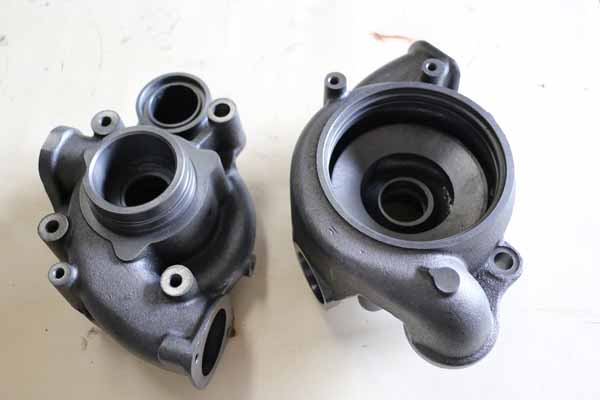b. Requirements for fixture materials:
1. For general metal and non-metal specimens, the jaws of the fixtures are in direct contact with the specimens. Generally, high-quality alloy structural steels, alloyed high-carbon steels (or low-carbon alloy steels), and cold-working die steels are used, and appropriate heat treatment is performed. The process (quenched and tempered, carburized and quenched, etc.) increases its strength and wear resistance. Sometimes insert special steel at the jaws, or spray grit on the surface of the jaws.
2. For jigs with a small test force, the surface that is in contact with the sample is made of viscous rubber. (Example: clamp surface of sample such as plastic film, filament, etc.)
3Clamps are generally made of high quality medium carbon steel and alloy structural steel, and their mechanical properties are increased through proper heat treatment process. Sometimes non-ferrous metals such as aluminum alloys and special metals are used to reduce weight. Casting structures (cast steel, cast aluminum, etc.) are sometimes used
c. The fixture structure requirements:
1. The design of the fixture is mainly based on the test standard of the material and the shape and material of the sample (specifically, the finished product and semi-finished product). The above-mentioned test standards refer to ISO, ASTM, DIN, GB, BS, JIS, etc., as well as enterprise standards, industry standards, etc. These standards generally have strict regulations for sample preparation and test methods. We can design different fixtures based on different specimens and test methods. For fixtures used for special specimens (finished and semi-finished products), fixtures are mainly designed based on the shape and material of the specimen.
2. The fixture itself has no fixed structure (such as the wire can be clamped by the winding method, and it can also be clamped by two flat plates. The metal thin plate sample can be wedge-clamped or can be clamped by the clamp). There are obvious differences. Hosts are similar in domestic and foreign countries, and fixtures are different from domestic ones and domestic ones. There are also major differences between companies. This mainly depends on the overall level of the company and the accumulated experience of designers. Fixtures from abroad, such as INSTRON, MTS, ZWICK, etc., are generally meticulous in workmanship, availability is high, but the price is higher, and they are in the high-end market; while our fixtures have a large market share in the domestic market, To some extent, it can replace some of the fixtures in foreign countries, in the high-end market. However, there are still some gaps between domestic and foreign standards in the use of fixtures for new materials and special materials.
The United States TestResources mechanical test system all-electric servo static pull, pressure, torsion testing machine, dynamic & fatigue series testing machine, with a variety of professional fixtures, can also be used for other brand testing machine 3. The fixture itself is a locking mechanism. We know that the locking structure on the machine is: 缧 lines (ie threads, screws, nuts), bevels, eccentrics, levers, etc. The fixture is a combination of these structures. The jig used in the test machine has no fixed pattern in structure, and differs greatly in structure depending on the size of the test piece and the test force. (The test specimens with large test force generally adopt inclined clamping structure. With the increase of test force, the clamping force increases. The shoulder specimen adopts hanging structure, etc.). If the fixture is divided by structure, it can be divided into wedge-shaped fixtures ( Refers to fixtures that use the principle of bevel locking mechanism, fixtures for clips (fixtures that use single-sided or double-sided thread-tightening principle), winding-type fixtures (fixtures in which the sample is locked by winding), eccentricities Jig refers to the use of (eccentric locking principle of the structure of the fixture), lever type fixture (refers to the use of leverage to enlarge the principle of the structure of the fixture), shoulder type fixture (refers to the shoulder specimen of the fixture), bolt type fixture (refers to Fixtures for measuring the strength of screws such as bolts, screws, and studs, and 90° peeling jigs (refer to jigs for vertical stripping of two specimens). Each of these fixtures has its own advantages and disadvantages. For example, a wedge-shaped fixture has a small initial clamping force and increases with the test force. The clamping force increases. For clip fixtures, the initial clamping force is large and increases with the test force. The clamping force decreases.
Water pumps serve in a wide range of applications such as pumping water from wells, aquarium filtering, pond filtering and aeration, in the car industry for water-cooling and fuel injection, in the energy industry for pumping oil and natural gas or for operating cooling towers.
The water pump housings we supplied are one of the key parts in the pump assembly.
We manufacture & sell more than 15,000 sets /year to all over the world.
We also supply fine machined Pump Accessories according to your requirement.

QFAP has specialize in producing pump housings more than 5years.
Materials: Ductile iron, Grey iron, Aluminum
Surface treatment: Painting, Powder coating, only oiled
Main of our customers is from German, USA, and CAN.
With the long terms of experience in the pump industry, we could supply the pump housings or help to design the housings according to your requirements.
Water Pump Housing,Water Pump Housing Leak,Water Pump Housing Gasket,Water Pump Housing Unit
SHAOXING QIFENG AUTO PARTS CO., LTD. , https://www.sxqfap.com